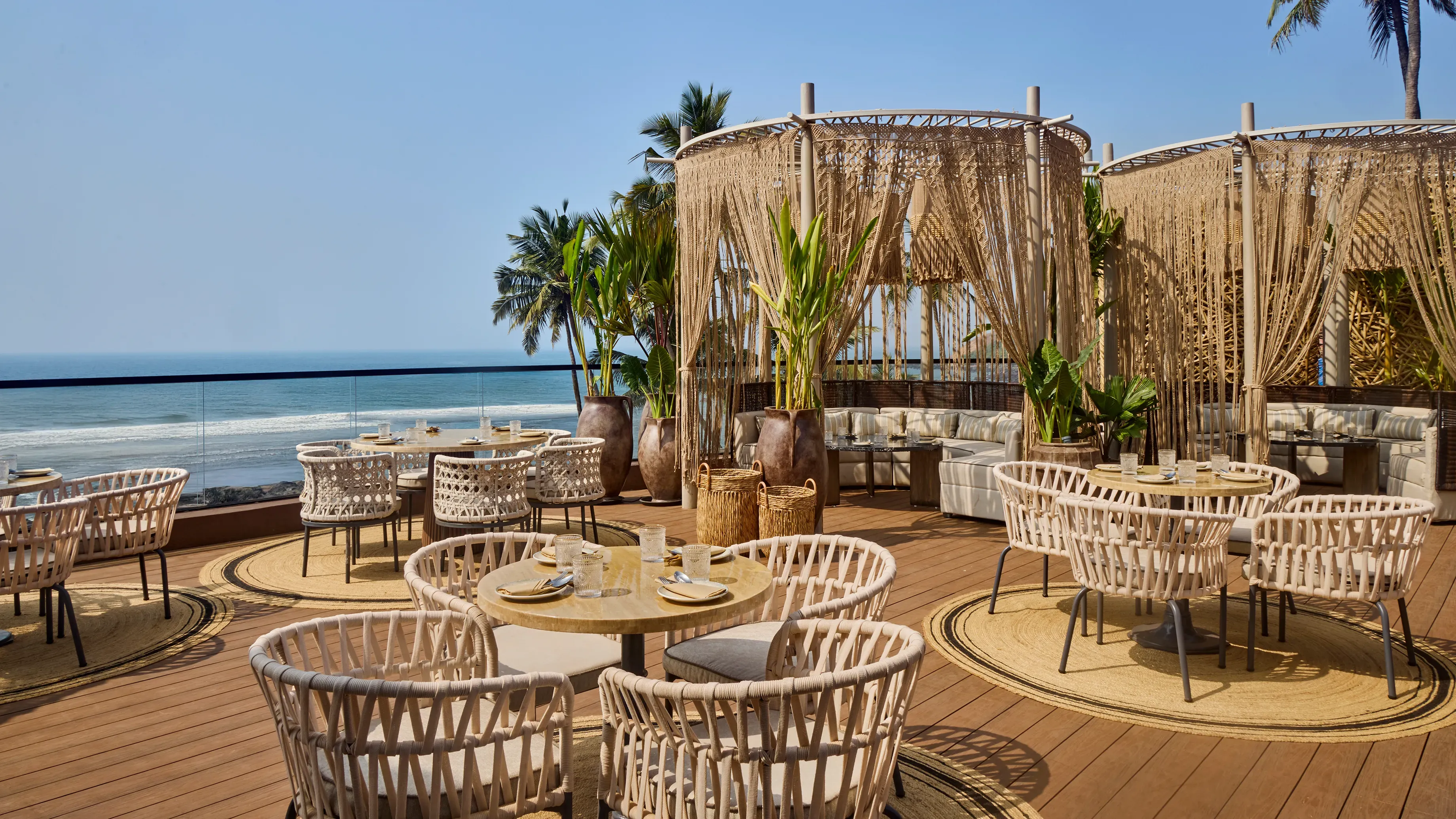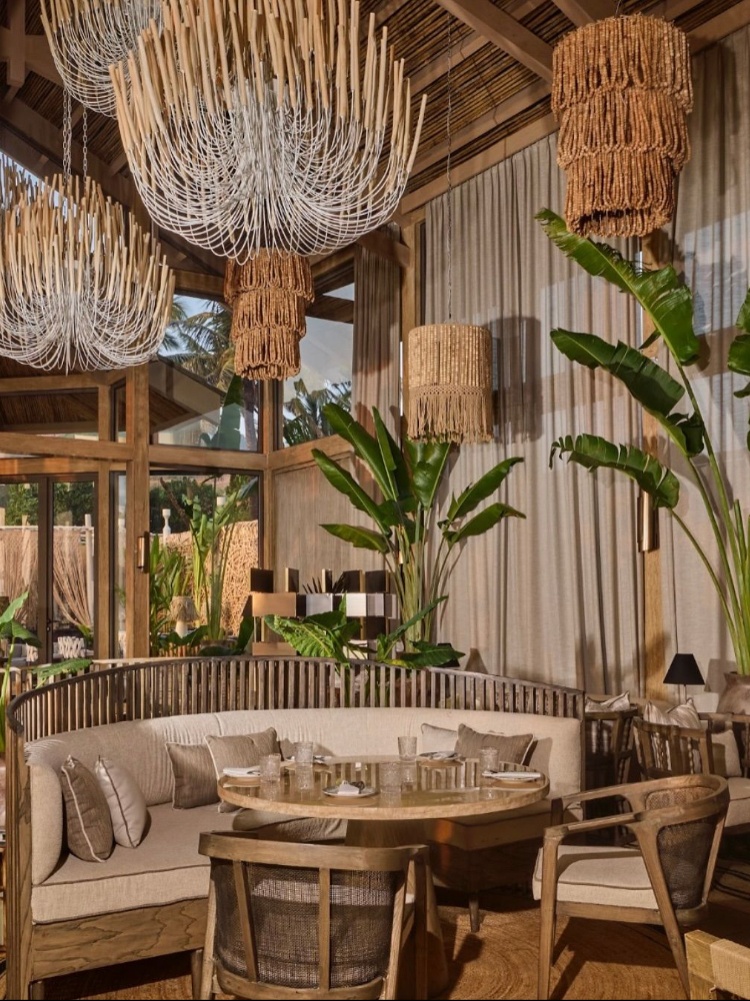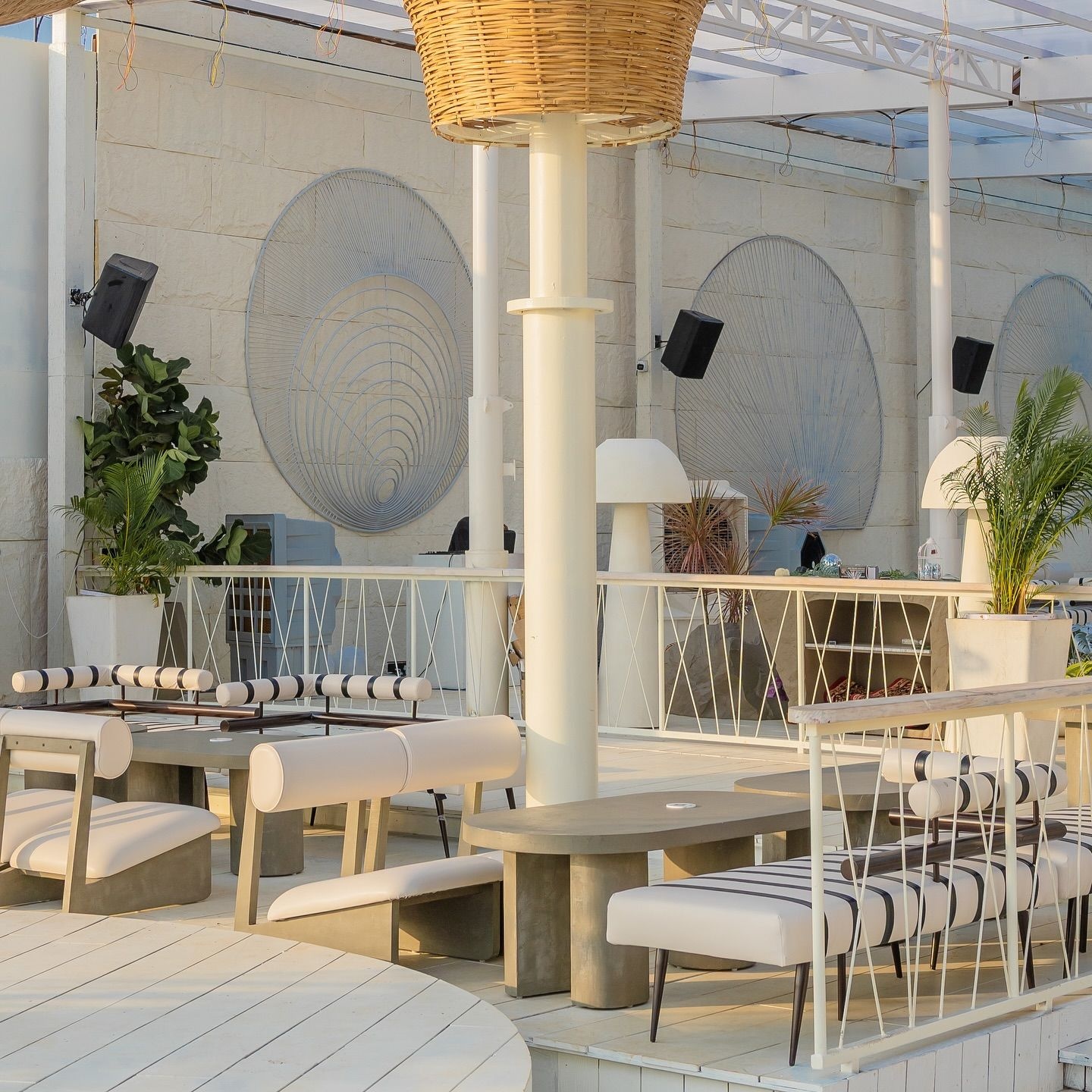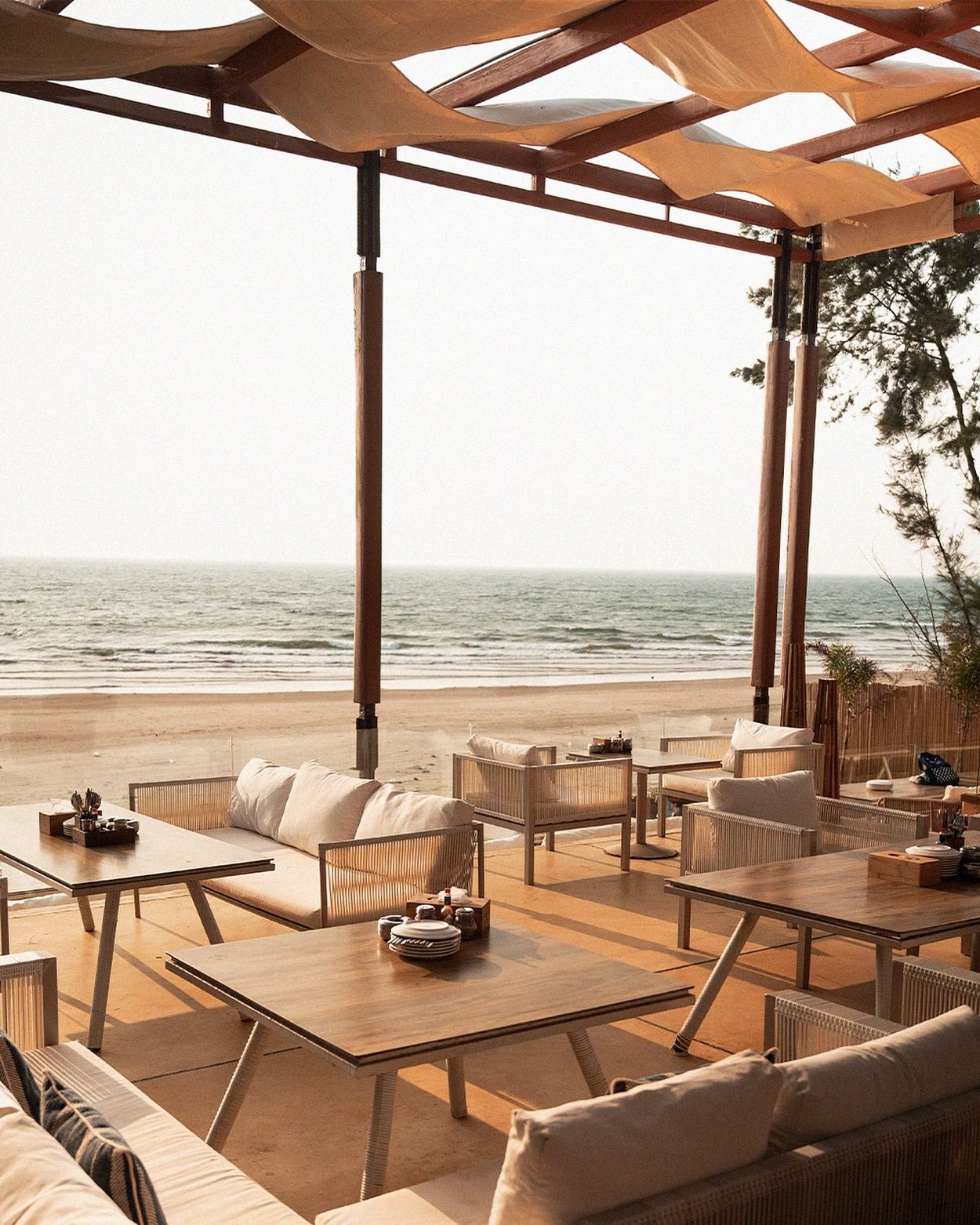For decades, India’s smallest state has been the country’s favourite escape. From Mumbai’s construction dust. Bengaluru’s traffic snarls. Delhi’s smog and Hyderabad’s heat and hustle. Goa’s beaches were a world away from this chaos: long swims, lazy brunches, cheap beer and fresh seafood, served a few steps from the sea. Everyone sat on the same plastic chairs, eating the same greasy “Full English Breakfast”, drinking the same sweet cocktails and then settling into the same rickety beach beds.
That’s changed. Walk down any of the popular stretches in North Goa, and you’ll find a new kind of seaside experience punctuating the shoreline. You can’t really call these shacks. They aren’t serving saccharine mojitos and prawns swimming in butter and garlic. And they don’t look the same. Instead, they feel like mini portals to other sun-kissed shores: to Bali, to Tulum, to Greece, to Ibiza. Aesthetically designed and culinary adept, these places could be in any global beach town worth Instagramming. The beers aren’t cheap. The chairs aren’t plastic either.
“The classic Goan shack is iconic—there’s a certain magic in its simplicity and nostalgia that can’t be replaced. But over the years, I felt there was room to reimagine what a beachside experience could be,” says Suvir Saran, chef and culinary director at Jolene By The Sea, an exquisitely designed space that takes you to Tulum while you’re sitting on Anjuna beach.
Jolene’s Tulum-core aesthetic comes alive through natural materials like wicker, cane, and warm wood finishes as well as an earthy colour palette that mirrors the beach outside. Tropical accents shine among large leafy plants and abundant natural light, which gives the space an airy openness even on a busy Sunday evening. The day I visit, Karim Ellaboudi, one of Goa’s liveliest keyboard players, is seen setting the mood with some jazz and bossa nova tracks, and the cocktails and pizza are both hitting the spot. “Guests were looking for better-quality food and drink, more thoughtful service, and spaces that felt intentional without losing the soul of Goa. We wanted to create a place where people could relax into the easy rhythm of the beach but also enjoy a level of culinary and design quality that matched their expectations today,” adds Saran.

He’s right about this, because, over decades, the expectation from Goa has been singular: an unspoken pact to keep the good times rolling for as long as you were awake. The most popular shacks would stay open until the last table left and be back in action at 8 am with breakfast ready. No shifts. No breaks. No days off. No downtime. The hospitality has always been legendary, with stories passed around like souvenirs: the manager riding off in the rain to hunt down a guest’s favourite cigarette brand; the bartender sliding over a bottle of whisky, knowing that his night was over but yours was just getting started; the bar owner waving off the bill after an after-after-party that stretched into sunrise.
That kind of generosity is hard to match today, and the change we’re witnessing is more about overlaying it with an urban sensibility, a polish that feels familiar to the global citizen in us—the crowd that has moved on from masala papad to avo toast and pina coladas to picantes.
This isn’t the first time Goa’s beaches have undergone, pardon the pun, a sea change.
Just over half a century ago, the stretch of sand that Jolene overlooks saw a very different kind of influx. The hippies, disillusioned by capitalism and drawn to the rhythms of counterculture, reached Goa in the 1970s in search of a slower, freer, and cheaper way of life. They brought with them not just tie-dye T-shirts and trance music, but also a new relationship to the beach, one that turned it from a fishing ground and community space into a backdrop for endless beach days and moonlit nights. The first Goan shacks, back then in Baga, appeared to service this crowd.











